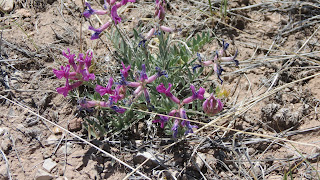 |
| Add caption |
Who hasn't looked at old family photo's without having questions about the pictures?
- Who are these people?
- What are they doing?
- When was this taken?
- Where was this taken?
- What's the story behind the photograph?
How do you use photos in the classroom? The Library of Congress and the National Archives as well as countless state Historical Societies have developed worksheets and lessons for analyzing historic photos. I love most of these lessons. So what's the problem?
The language and concepts are to big for many of my younger and struggling learners. I decided to scaffold the process. When kids work with the process they get better at it. They ask deeper questions and are excited about discovering the answers. To me photos are magic portals to exploring history.
I introduce the students to VTS - Visual Thinking Strategies http://www.vtshome.org/ with two books: "Rosie's Walk" by Pat Hutchins (I like the big book) and Flotsam by David Wiesner. I start by explaining that illustrations in picture books fall in roughly three categories (1) decoration (2) enhances and tells part of the same story as the text (3) tells a different story from the text.
Rosie's walk is a parallel story, the illustrations tell a different story than the text. My students love the book. It is really exciting watching them discover the other story. I facilitate their discovery by repeatedly asking three open ended questions.
- What's going on in this picture?
- What do you see that makes you say that?
- What more can you find?
Once the kids have practice examining illustrations the next step is to look at photos using the same strategies. Two great techniques to introduce is the "Magic Eye" http://www.learnnc.org/lp/editions/tobacco-activity-two/1494 and "Crop It" http://teachinghistory.org/teaching-materials/teaching-guides/25697 .
So where can you find pictures to use in the classroom? I have been collecting interesting pictures from my local newspaper. Another place for interesting contemporary pictures is National Geographic's Picture of the Day. Our Class Reads wrote a post about how she uses "Picture of the Day" in her classroom. http://blogs.wcpss.net/ourclassreads/2012/03/13/picture-of-the-day-2/
Here are some sources to get you started finding historical photographs.
- American Memory Library of Congress http://memory.loc.gov/ammem/index.htm
- History Place - Photo of the Week http://www.historyplace.com/weeklyphoto/index.html
- History Place - Child Labor photographs http://www.historyplace.com/unitedstates/childlabor/index.html
- University of Oregon http://oregondigital.org/digcol/gh/
- Montana Memory Project http://mhs.mt.gov/research/MTMemoryProj.asp



















































